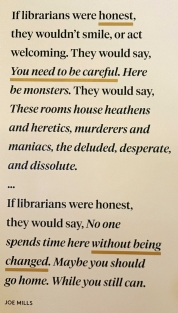
We visited our relatives in the Washington DC area in May 2024, and also got to see some very fine museum exhibitions.
Our first visit was to "Planet Word", a new linguistics-oriented museum. One of its displays is a model library that includes the following charming quote:

Franklin Park, right outside Planet Word, has a children's area that includes a path labeled with different words for movement. Click HERE to see a video of the path.
Then in the East Wing of the National Gallery, we saw the exhibition "Woven Histories: Textiles and Modern Abstraction", focusing on the interplay during the 20th century between weaving, knitting, and fabric arts on the one hand and abstractionist fine art on the other. One charming example is "Replica of a Chip", which Intel commissioned from Navajo weaver Marilou Schulz reprenting the Pentium chip.
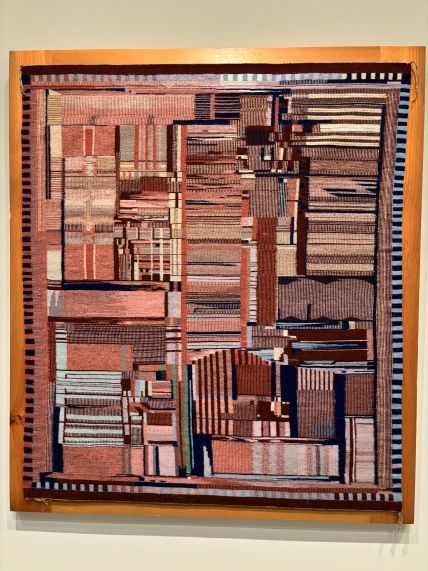
I was also struck by Valerie Jaudon's "Jackson", which combines basketry, Celtic knotwork, and Islamic ornament, challenging the narrow definitions of modernist abstraction.

There were also many fine examples of abstract art from the other side of the dialog, like "Procession" by Picabia and "Seated Figure" by Goodwin.

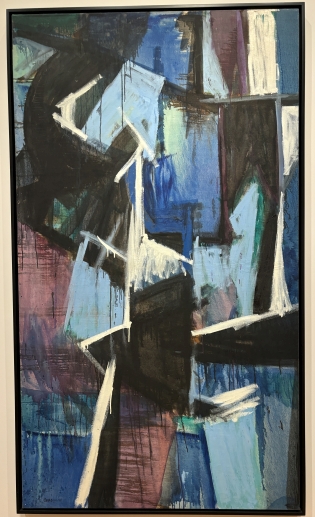
While I didn't get a picture of it, there was also a piece from one of the Communist countries of Eastern Europe where abstract art was illegal. The piece appeared to be an advertisement with a fashionable model showing off a sweater, but the sweater was actually the art that would have been prohibited if it were recognized as such.
The next day, after a brief pass through the Human Origins exhibit in the Natural History Museum, we went to Hirshhorn, and its current "Revolutions: 1860-1960" exhibit, which traces modern art chronologically from the late 1800's, explaining the different movements along the way. I'm going to limit myself here to just a few selections that struck me, without trying to trace the history.
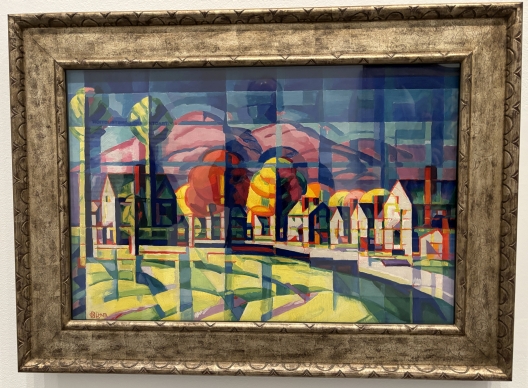
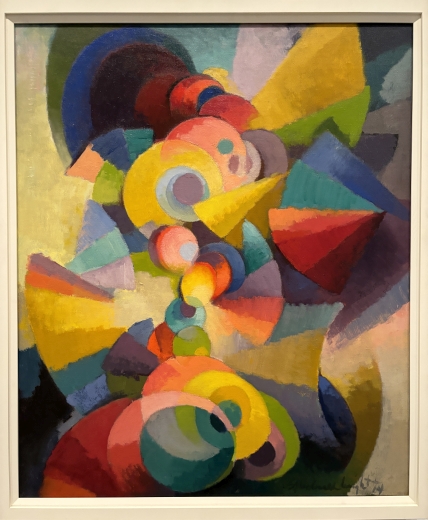
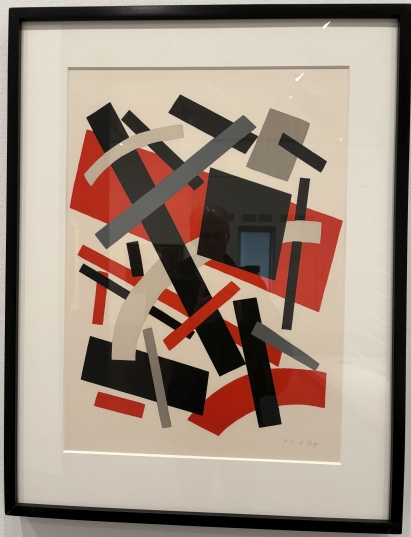
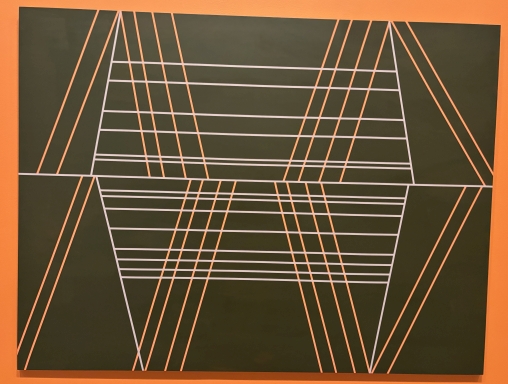
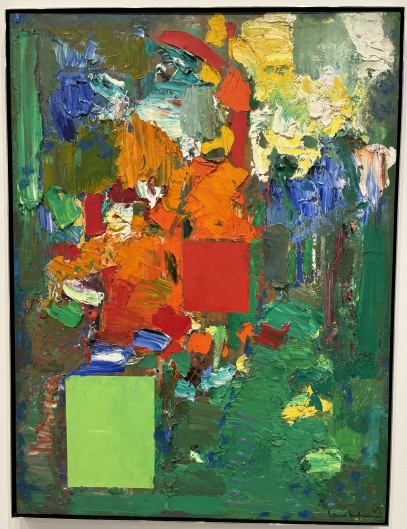

The exhibit was designed by a studio in Paris that clearly feels that a work of art should be experienced on its own, without any labels. A large work be hung on its own on, say, a yellow-painted section of wall with no label. Then, somewhere else in the room, there would be a card saying "On the yellow wall:", and naming the artist and piece.
The Hirshhorn also had an impressive multimedia installation by Laurie Anderson. She brought in four sculptures but mostly painted directly on the walls, floor, and ceiling, covering them with stories, songs, and quotations related to current events, with recordings playing. It took 20 minutes just to walk around and view it. My first picture includes one of her sculptures, a raven, and the second a quote that particularly struck me.


We then walked by an interesting sculpture that Gordon had suggested we see, "Public Figures", in front of the Asian Art Museum. It's a large marble plinth, of the sort that typically supports a single large person in bronze, but here the plinth itself is supported by a large crowd of small bronze male and female figures.
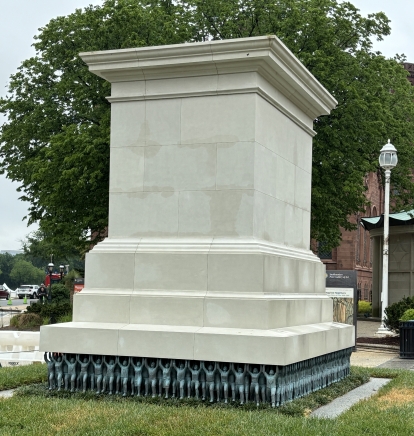
Then we walked through the sculpture garden of the national gallery. One impressive piece there was Roy Lichtenstein's "House 1", which is actually concave but contrived to look convex, and which appears to rotate as you walk past it. There's a YouTube video of walking around the house that demonstrates the illusion better than my still picture can here
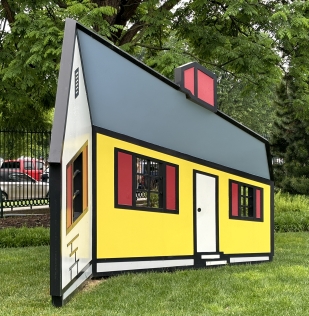
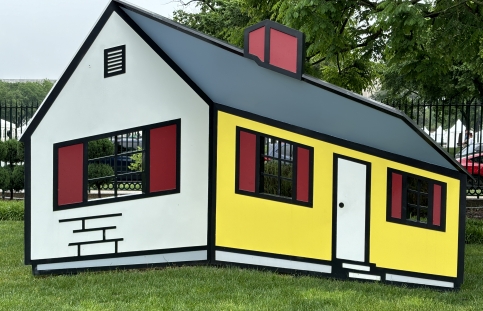
There's a fountain in the garden with 8 nozzles arrayed 4 opposite 4, all pointing toward the center of the pond. It took us a while to realize that the pressure gradually varies over perhaps a 10 minute cycle. When we first saw them, the jet from each nozzle hit the water perhaps 8 feet in front of the nozzle, but the pressure gradually built up until, as in the picture below, all 8 jets were combining in the center, producing a Christmas tree of spattering spray. Fantastic!

Our final visit was to the American Art Museum, housed with the National Portrait Gallery. They have a fine permanent exhibit; the piece "Marlin" by Joan Mitchell particularly struck me.
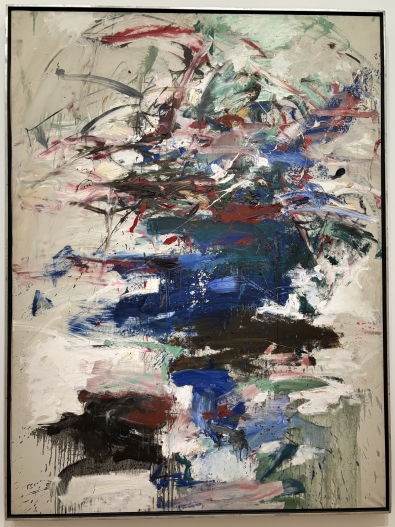
They also had a special exhibit of work by Alma Thomas, a black woman artist who composed pieces from many single-color blocks. One of her pieces was prominently displayed in the Obama's White House. I was most struck by her piece "Blast Off", inpired by the Apollo missions.
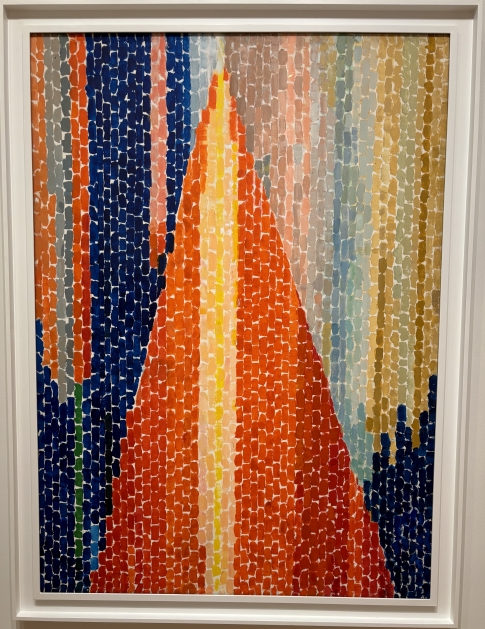
But by far the most impressive exhibit there at the moment is a large one of Amish quilts. The designs are amazing, though the exhibit notes that there is an inherent tension in taking the hand work of women who choose to live simply and hanging it on the walls of marble museums as fine art. Even within the community, there was some tension. When more conservative community members were going to visit, Amish women would sometimes turn their quilts over to the less showy side.
The Amish quilters didn't focus only on the design of the pieced colored squares. They also left large single-colored regions where they could show off complex figured designs in their tiny quilting stitches.
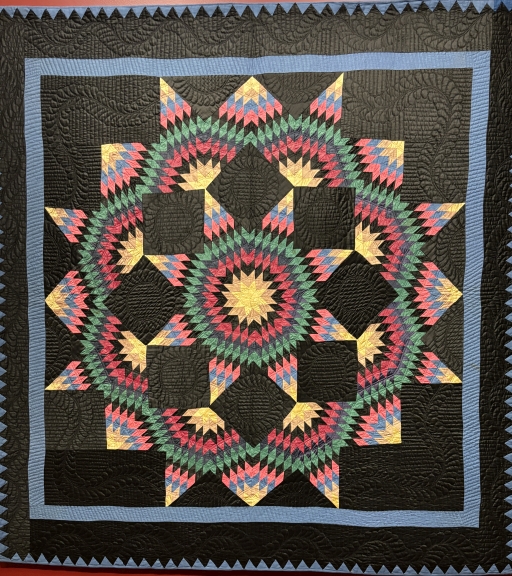
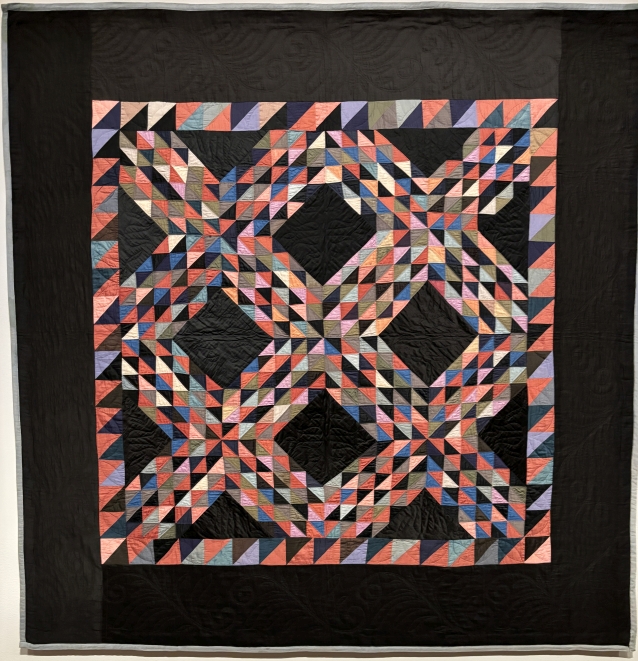
They noted and responded to quilt patters in the outside world, including the faze for "crazy quilts". This "Contained Crazy" quilt reminds me of the Scottish Country Dance saying about "controlled abandon".

And there were a number of amazing versions of my favorite "Tumbling Blocks" design.


It's a great town for museum-hopping. We should try it again sometime.
Back to ramshaw.info home page
Updated 2024-05-06